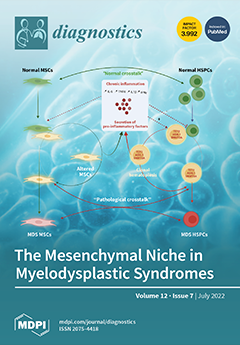Non-alcoholic fatty liver disease (NAFLD) is a common finding among patients with type 2 diabetes mellitus (T2DM). Between NAFLD and T2DM exist a bidirectional relationship. Patients with T2DM are at high risk for NAFLD, and evidence suggests that T2DM is linked to progressive NAFLD and poor liver outcomes. NAFLD promotes the development of T2DM and leads to a substantial increase in the risk of T2DM complications. This study aimed to assess the prevalence of liver steatosis and fibrosis in patients with T2DM from north-eastern Romania by using Vibration-Controlled Transient Elastography (VCTE) with Controlled Attenuation Parameter (CAP), which is a non-invasive method and can assess simultaneously liver steatosis and fibrosis. In total, 424 consecutive patients with T2DM were enrolled and evaluated using VCTE with CAP from January 2020 to January 2022. Clinical and laboratory data were recorded in all patients. For the CAP score, we used the following cut-offs: mild steatosis (S1)—274 dB/m, moderate steatosis (S2)—290 dB/m, and severe steatosis (S3)—302 dB/m. For liver fibrosis, to differentiate between fibrosis stages, the cut-off values were F ≥ 8.2 kPa for significant fibrosis (F2), F ≥ 9.7 kPa for advanced fibrosis (F3), and F ≥ 13.6 kPa for cirrhosis (F4). In total, 380 diabetic patients (72.6%) had liver steatosis (51.3% females, the mean age of 55.22 ± 10.88 years, mean body mass index (BMI) 29.12 ± 5.64 kg/m
2). Among them, 26 (8.4%) patients had moderate liver steatosis (S2) and 242 (78.5%) patients had severe hepatic steatosis (S3). According to VCTE measurements, 176 (57.14%) patients had liver fibrosis, 36 (11.7%) of them had advanced fibrosis (F3), and 42 (13.6%) diabetic patients had cirrhosis (F4). Univariate analyses showed that severe steatosis was significantly associated with ferritin (β = 0.223,
p = 0.022), total cholesterol (β = 0.159,
p = 0.031), and HDL-cholesterol (β = −0.120,
p = 0.006). In multivariate analyses, BMI (β = 0.349,
p < 0.001), fasting plasma glucose (β = 0.211,
p = 0.006), and triglycerides (β = 0.132,
p = 0.044) were predictors of S3. Patients with T2DM have a high prevalence of severe steatosis and advanced fibrosis which can lead to the development and progression of complications with high morbidity and mortality rates. Hence, it is necessary to implement screening strategies to prevent advanced liver disease in patients with T2DM.
Full article






